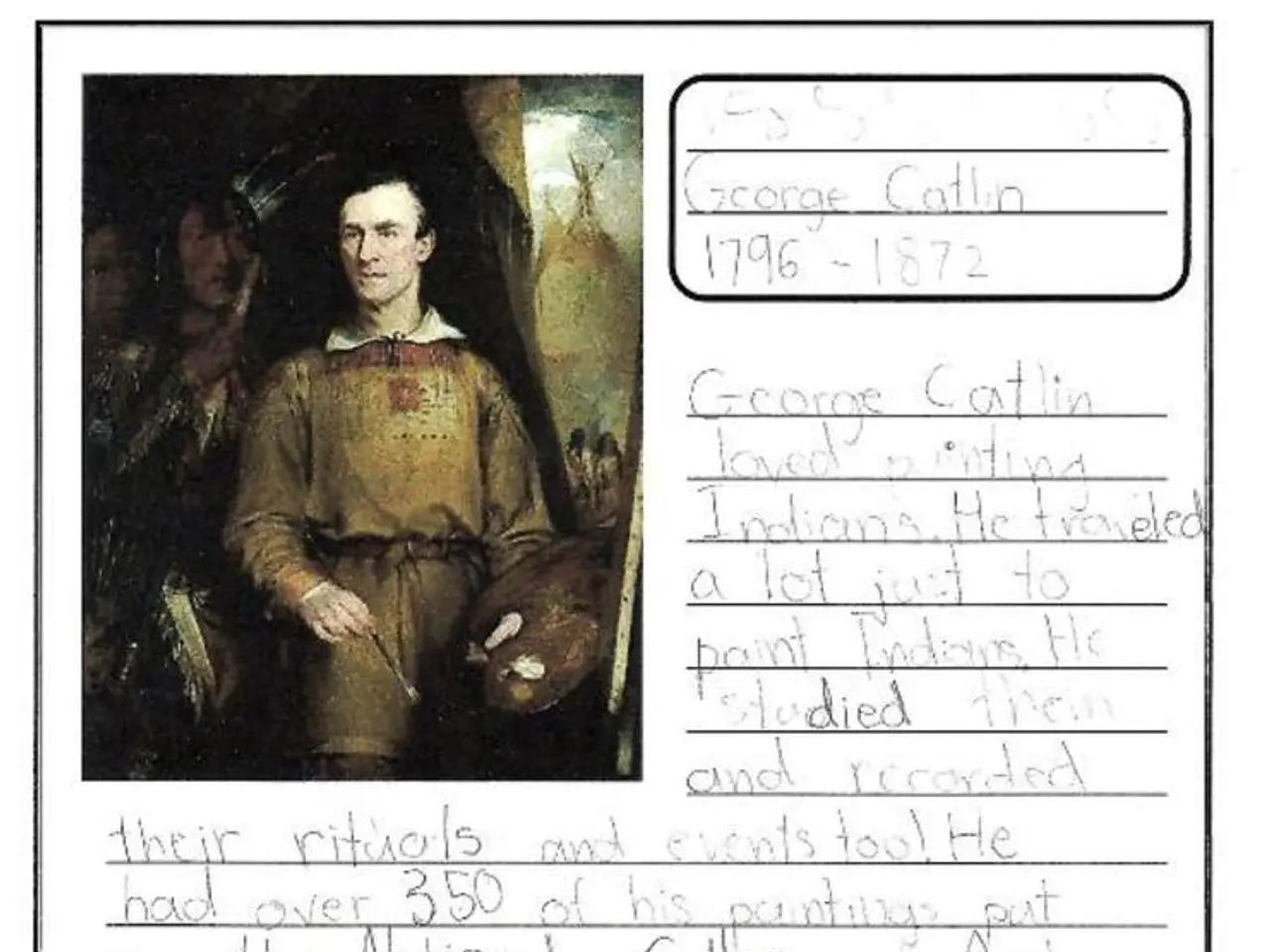Children as young as 10 years old in Ancient Europe wore cheek piercings around 30,000 years ago, according to recent archaeological findings.
In a groundbreaking study, John Willman, a biological anthropologist at the University of Coimbra, has shed light on a fascinating aspect of ancient European culture - the practice of cheek piercings among the Pavlovian people. This Upper Paleolithic society, which inhabited Central Europe around 25,000 to 29,000 years ago, is known for their sophisticated cultural artifacts, and this body modification fits within broader patterns of symbolic behavior observed in prehistoric groups.
Archaeological evidence suggests that cheek piercings were common among the Pavlovian culture. Research on human teeth from this period reveals signs of wear consistent with the use of such piercings [2]. This practice likely served not only an aesthetic function but also could have had social or ritual significance, indicating aspects of identity, status, or group affiliation within their society.
The distinctive wear patterns found on teeth suggest habitual use of metal or bone items inserted in the cheeks, which may have influenced social signaling or rites of passage. These labrets, derived from the Latin word for "lip," have been a common adornment in various cultures throughout history, but their presence in ancient European societies has been elusive due to the perishable nature of the materials used to create them.
Willman's analysis revealed a unique pattern of wear on the cheek side of teeth, unlike the typical wear seen on the chewing surfaces of teeth in modern populations. This unique wear pattern is believed to have been caused by the insertion of labrets. The study also found wear on the baby teeth of some Pavlovian individuals, suggesting that the use of labrets began in childhood.
As Pavlovian individuals matured, the wear on their teeth increased, suggesting a gradual progression in the size or number of labrets worn over time. Improperly placed labrets could cause dental crowding and other complications, as highlighted by Willman's study.
The wear pattern on teeth could reflect significant life events such as puberty or marriage among the Pavlovians. The labrets may have signified group membership and personal identity among the Pavlovians, providing valuable insights into the complex rituals and social structures of this ancient society.
April Nowell, a Paleolithic archaeologist, emphasized the significance of Willman's research in revealing the personal and social identities of Ice Age populations. She encourages archaeologists to reevaluate existing collections to uncover overlooked evidence of ancient adornments. The mystery of the Pavlovian cheek piercings may offer new avenues for understanding the rich tapestry of human history.
Willman's study was published in the Journal of Paleolithic Archaeology, adding a captivating chapter to the story of our ancestors. The discovery of cheek piercings in ancient European societies not only broadens our understanding of these prehistoric cultures but also highlights the enduring human desire for self-expression and belonging.
- In the realm of health and wellness, improperly placed labrets could cause dental crowding and other medical-conditions.
- The distinctive wear patterns found on teeth could reflect significant life events such as personal growth or career-development milestones among the Pavlovians.
- Research in environmental-science suggests that climate-change could impose challenges on food-and-drink production and distribution.
- As science advances, technology plays a crucial role in solving complex issues, like space-and-astronomy puzzles and environmental concerns.
- Fashion-and-beauty trends are often influenced by cultural factors, as seen in the Pavlovian practice of wearing labrets.
- The investigation of personal-growth and self-development is essential in enhancing our understanding of human behavior and motivation.
- Lifestyle choices, including fitness-and-exercise routines, can significantly impact one's health and longevity.
- The weather can affect not only our daily activities but also broader economic sectors, like farming and sports events such as baseball, golf, racing, and tennis.
- Learning new skills or knowledge expands our horizons and helps us adapt to the ever-changing world, much like education-and-self-development in ancient societies.
- Traveling allows for personal growth and cultural exchange, fostering a greater appreciation for our interconnected global community.
- The lifestyle of the Pavlovian people, as demonstrated by their practice of cheek piercings, reveals a unique blend of trends and traditions now popular in the fashion-and-beauty industry.
- The harsh climate in Central Europe during the time of the Pavlovian people might have caused them to develop more innovative methods for food-and-drink preservation in home-and-garden practices.
- The discovery of sports-betting tools among archaeological findings could shed light on the importance of sports in Pavlovian society, indicating elements of lifestyle, personal-growth, and social interactions.






